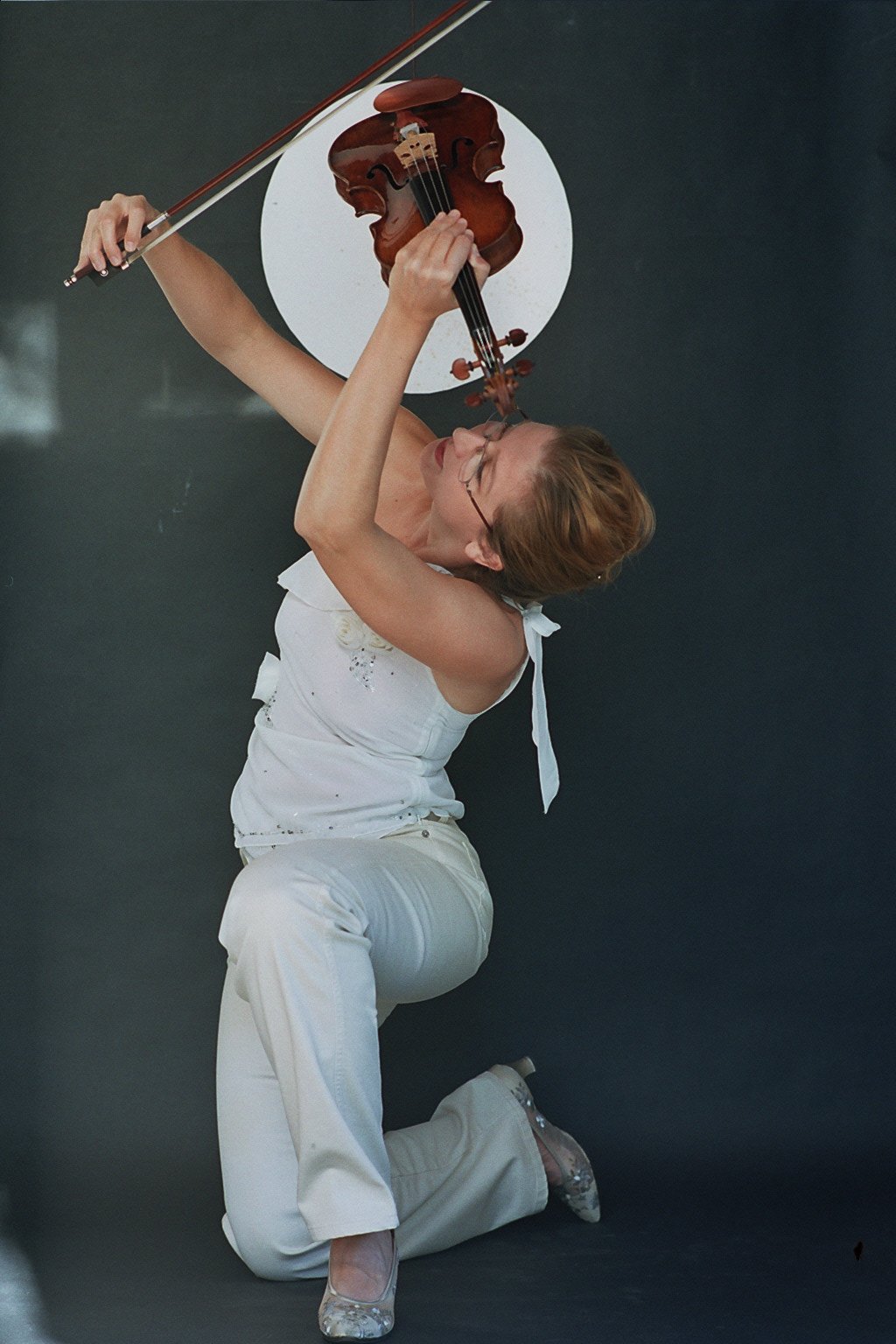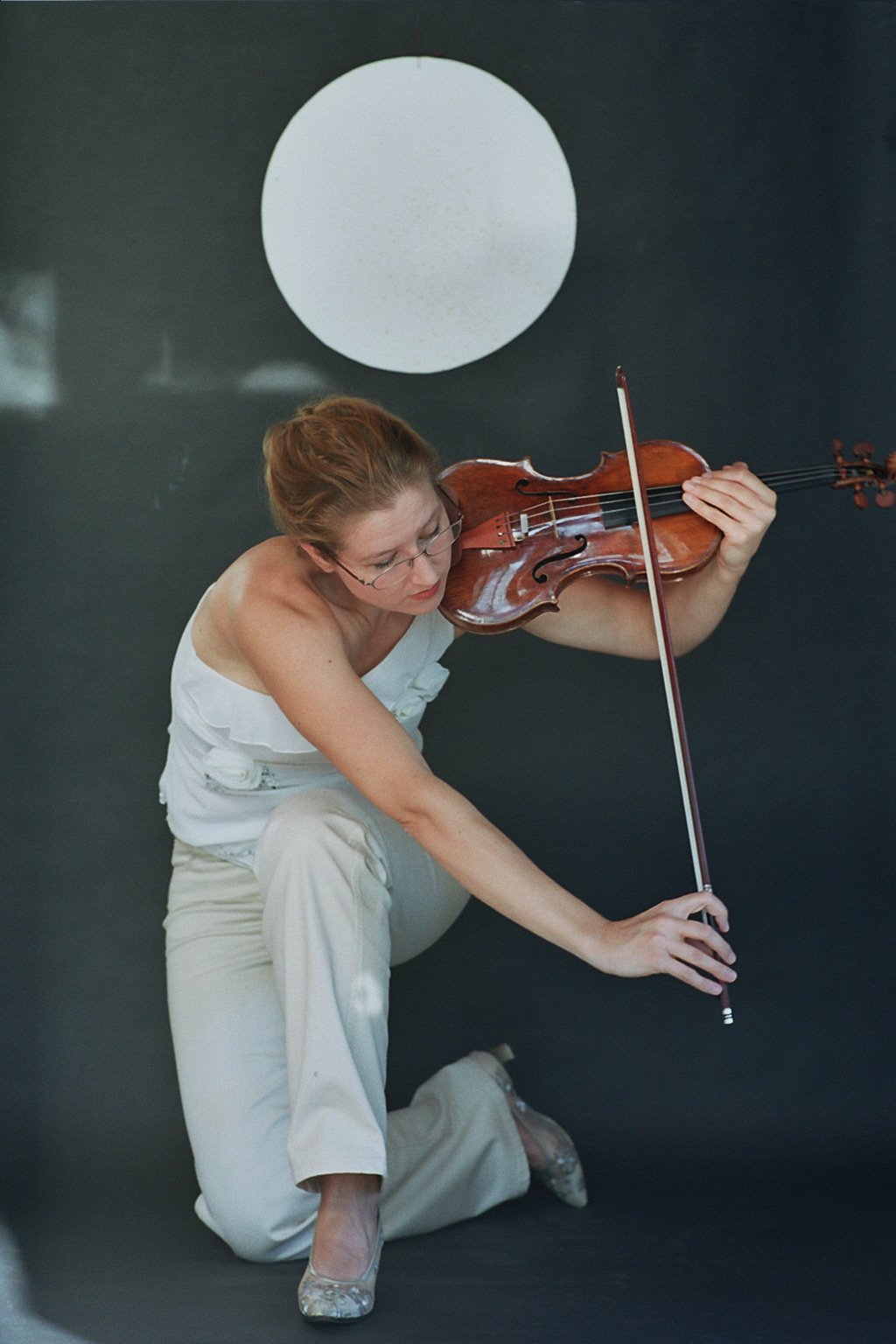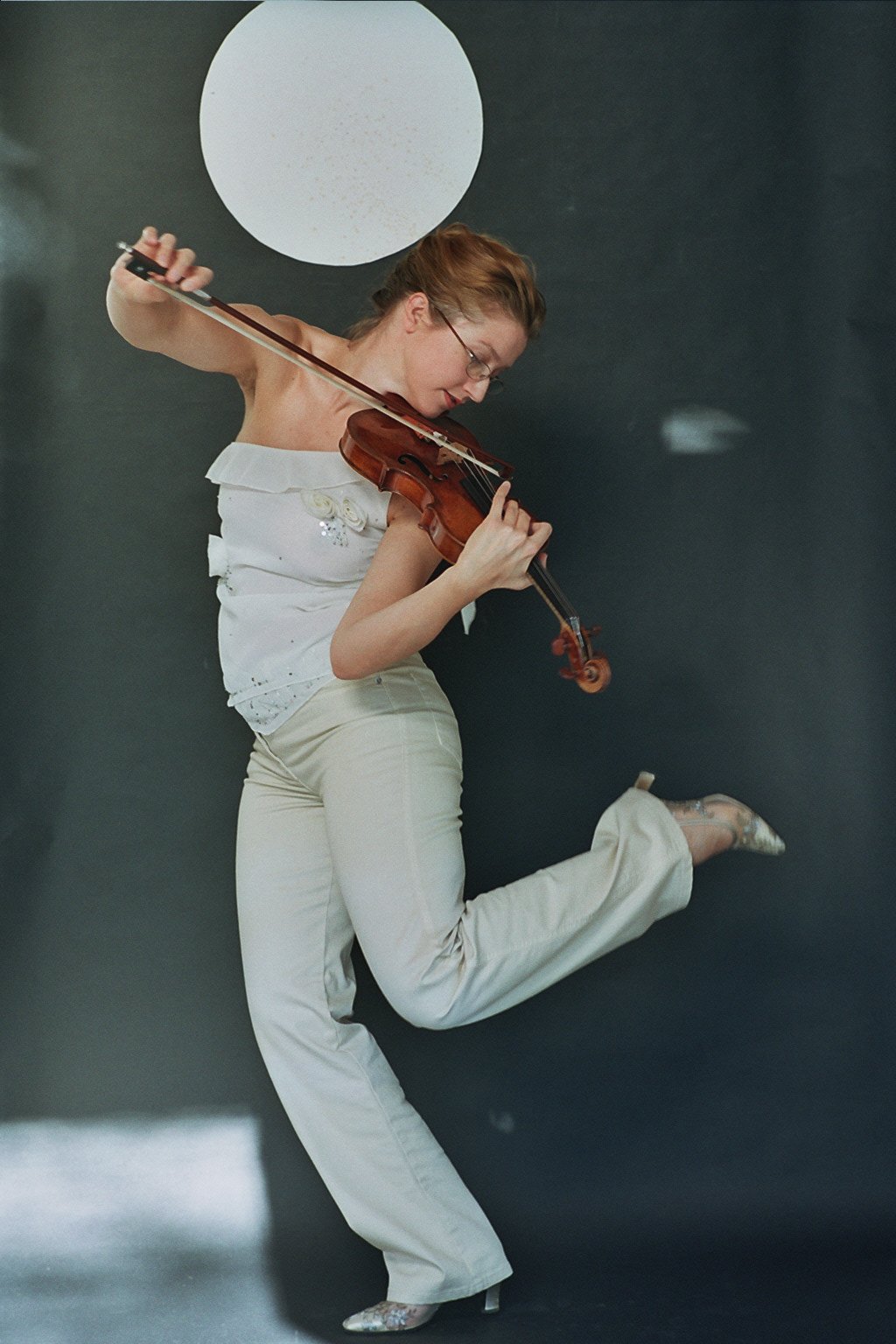Laugh Perfumes is a multimedia violin concerto composed by Douglas Geers with choreography by Maja Cerar, 2006.
Laugh Perfumes transcends the traditional ideas of a violin concerto by incorporating visual and theatrical elements. The primary inspiration for Laugh Perfumes is the influential classic 1912 work Pierrot Lunaire by Arnold Schoenberg, a work which in its eccentric expressionist beauty draws from stock characters of the Commedia dell’Arte theater tradition.
Images from live premiere performance, Radio-Television Orchestra of Slovenia, Evan Christ, conductor. Festival Unicum, 2006.
The themes and harmonies of Laugh Perfumes were developed with the use of melodic, rhythmic, and timbral materials derived from Pierrot Lunaire. However, the Laugh Perfumes themes create their own sound world, with overt references to Pierrot Lunaire shimmering through in fleeting moments. Formally, the work has a “fractal” organization based on a seven-note motive from Pierrot Lunaire. That is, Laugh Perfumes has seven major sections, each centered upon one pitch from the following motive, which appears in the first measures of Pierrot Lunaire: G# - E – C – D – Bb - C# – G. Each of the seven main sections of Laugh Perfumes further divides into seven sub-sections, and these also follow the same pitch contour (although transposed) of the motive above. The seven large sections of the work may be thought of as “movements” of the piece, but most occur atacca in performance, so that the orchestra rarely falls to complete silence between sections.
The Seven Major Sections of Laugh Perfumes are as follows:
Dream
Rubies
Absinthe
Moonstruck
Nostalgia
Red Mass
Moon Union
In Laugh Perfumes, the violin soloist becomes the focal point representing Pierrot figuratively. The orchestra represents Pierrot as well, embodying the wildly varying ranges of his thoughts and emotions through musical means of texture, dynamics, and rhythm. Meanwhile, Laugh Perfumes intensifies the bonds between soloist and orchestra through visual and dramatic elements. A sculpture onstage represents the Moon, which is the object and the cause of Pierrot’s desire and demise; and lights represent moonbeams. The soloist interacts with the visual objects both musically and physically to portray Pierrot and his obsessions.
Unlike most concertos, the violinist in Laugh Perfumes wears a small microphone on her instrument. The microphone signal is sent to speakers near her initial position onstage. The amplification is used to allow for the softest violin sounds to be audible in the concerto setting, even while the soloist moves to numerous positions onstage. The musical materials for the piece take advantage of the intimacy possible because of the violin’s amplification, and they include exploration of both fine nuances and extremes of tone color.















